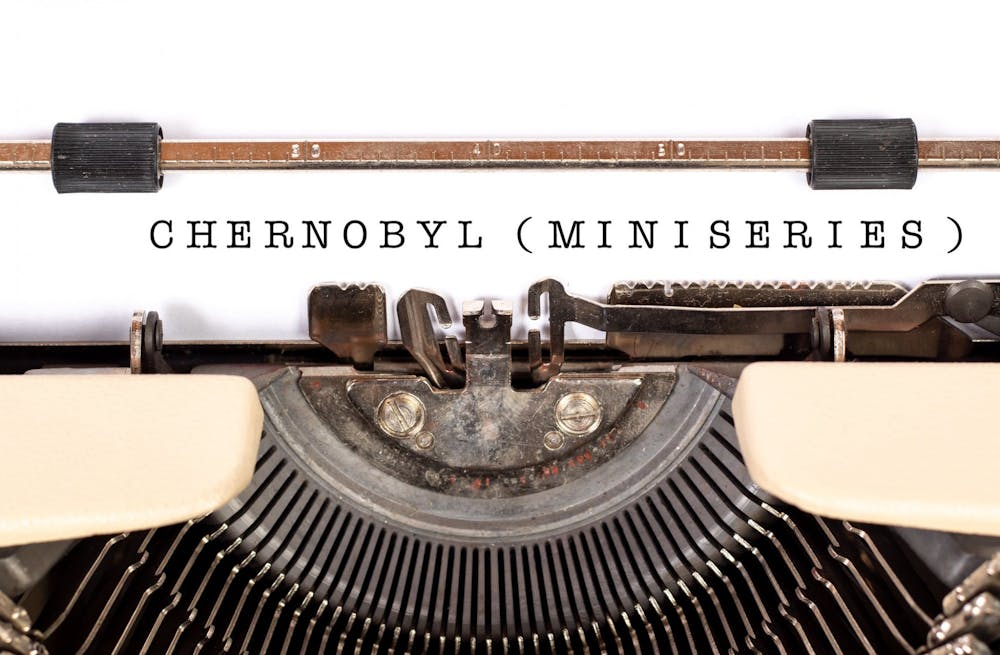Craig Mazin ’92, creator of HBO’s “Chernobyl” TV miniseries; Michael Reynolds, director of the program in Russian, East European and Eurasian Studies and associate professor in the Department of Near Eastern Studies; and Creative Writing Lecturer Susanna Styron spoke via Zoom to an audience of students and community members on Thursday, April 9, about the award-winning series, the history of the Soviet Union, and the art of screenwriting.
Reynolds opened the talk by explaining the Soviet political system and the Chernobyl disaster.
Chernobyl, formally the Vladimir Ilyich Lenin Nuclear Power Station, is a shuttered nuclear power plant located outside of Pripyat, Ukraine. at 1:23 a.m. on April 26, 1986, the plant suffered a catastrophic nuclear accident, when a flaw in a safety system known as AZ-5 caused Reactor 4 to suffer a massive steam explosion.
As Reynolds recounted, the blast released hundreds of tons of nuclear material onto the surrounding surface and atmosphere. The initial Soviet response was to deny that the accident had occurred, before finally admitting to it and beginning a decades-long cleanup process. As of 2020, Reactor 4 is encased in a massive steel sarcophagus with an expected lifetime of 100 years. Chernobyl’s most dangerous areas will remain radioactive for thousands of years.
Mazin’s HBO series chronicled the events surrounding Chernobyl through the stories of two Soviet citizens: Valery Legasov, a high level nuclear chemist, and Boris Shcherbina, a Communist Party career administrator, or apparatchik.
Styron began the discussion with Mazin through a discussion of the impetus behind the miniseries.
Mazin said he chose Chernobyl as a miniseries topic due to a decades-long personal interest. He was 15 years old in 1986 and recalled how similar Chernobyl seemed to the American Challenger disaster, which had occurred just three months prior.
“I was reading about it in 2013, and I realized I knew it happened, but I didn’t know why the reactor exploded,” he said.

Learning the basic facts of the incident, for Mazin, was like “discovering the history of some secret war we’ve never been told about.”
“Reading in deeper, a couple of facts jumped out: a safety test was being run that night. The scientist in charge of the cleanup killed himself two years after the accident,” he explained.
According to Mazin, an important part of writing the miniseries was choosing which characters to place at the center of the story. He ultimately settled on Legasov and Shcherbina. Legasov served as both a scientist and a party member, walking the line between empirical truth and a system that produced its own reality; Scherbina embodies the Soviet political apparatus as an uninteresting career bureaucrat.
“Legasov and Scherbina are two people living in two different truths within a delusional political system,” said Mazin. “The Chernobyl story is about how they find each other and agree upon a truth.”

To ensure his miniseries adhered to standards of historical accuracy, Mazin used as many primary sources as he could find. A Ukranian cultural consultant read over each script, so minor details could be adjusted.
“If we can, we will be accurate to the truth,” said Mazin of his intentions when writing. “If we have competing realities, default to the least dramatic. [We’re] only allowed to change things so [we] are able to tell the story at all.”
Chernobyl cast British actor Jared Harris and Swedish actor Stellan Skarsgård in the two main roles.
“I don’t think there should be any constrictions on what artists can represent and what cultures they can present,” said Mazin of casting. “If you are wandering into another person’s shoes, get it right.”
The lecture, entitled “The Making of Chernobyl,” was cosponsored by the Lewis Center for the Arts, the program in Russian, East European and Eurasian Studies, and the Center for Career Development. It was held over Zoom at 5 p.m. on April 9.








